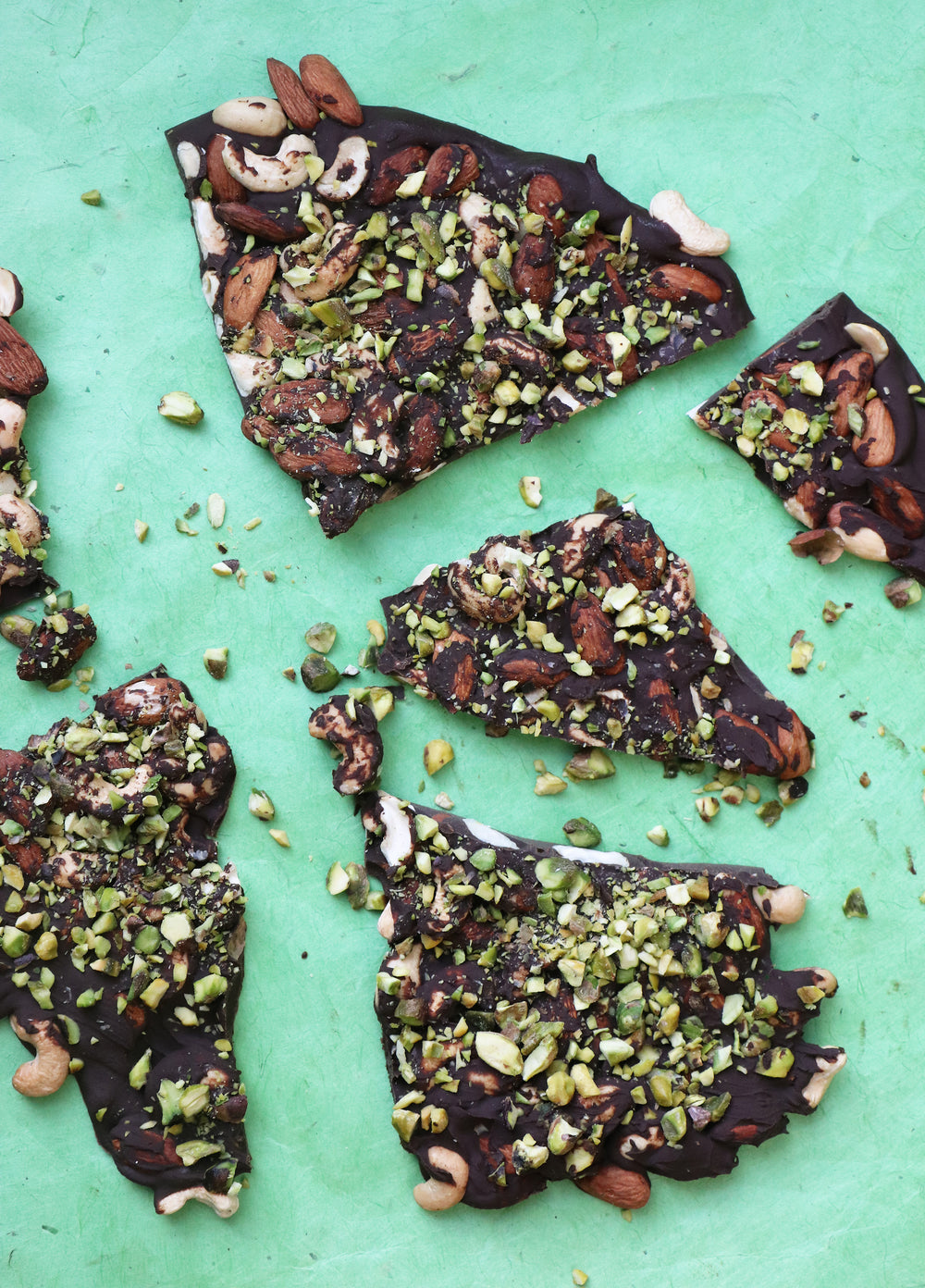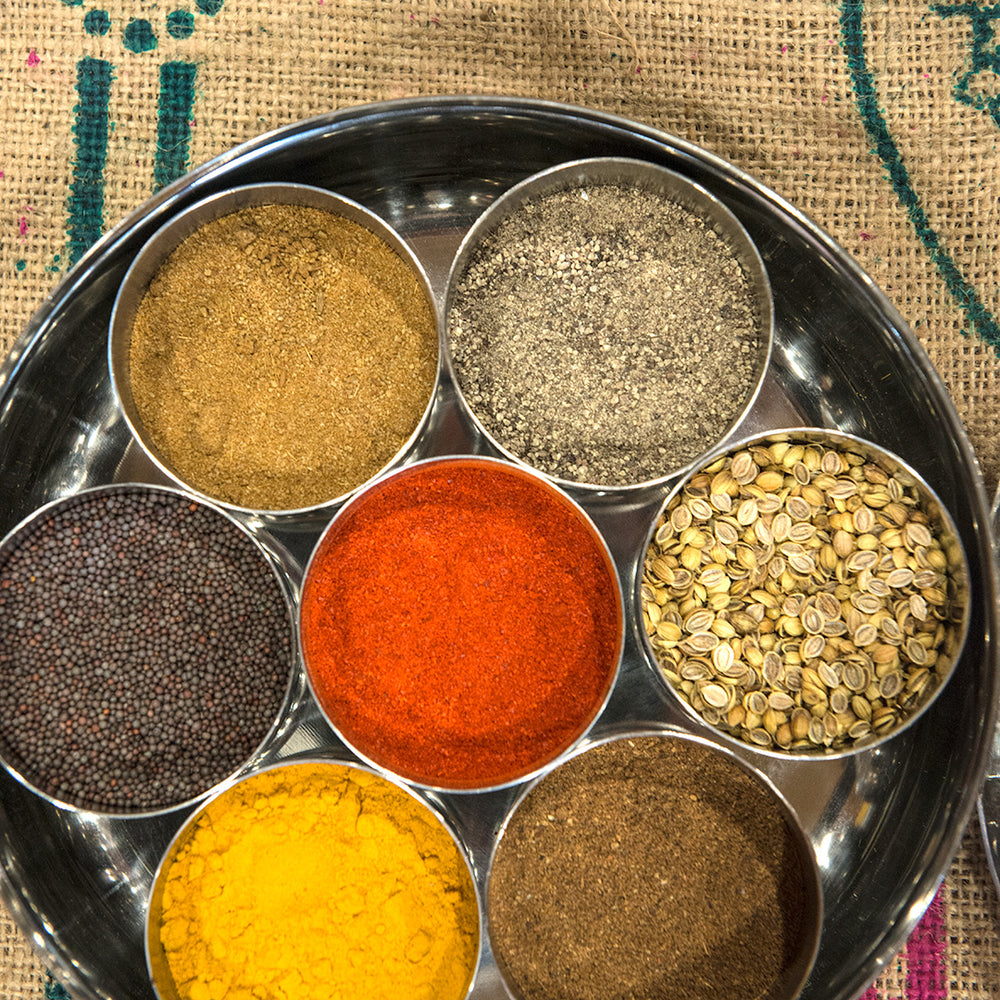Patra, a delicious quintessential snack from the Gujarat province of India, is a steamed and pan-roasted savory pinwheel made with taro leaves (aka elephant ears, colcasia leaves) rolled with a chickpea masala. Making patra transports me to my childhood in India and after-school rendezvous with friends over snacks and lassi. Gujarat is well known for its multitude of savory snacks usually made with vegetables, lentils and nuts — almost always salty, sweet and spicy at the same time. Locals think nothing of picking up hot samosas or pakoras from street vendors and stopping into friends’ houses unannounced for quick chats over cups of chai. In some cases, business deals and marriage proposals are done this way. The heart-shaped taro leaves provide an excellent source of chlorophyll and are a rich source of vitamin C. You can find these leaves growing wild in Houston. If not, find them at most Indian grocers along Hillcroft and U.S. 59. Patra is best eaten warm with chai or lassi in the afternoon, or as a light lunch with a salad.
makes ~4 - 6 servings
ingredients
8-10 taro leaves (aka colcasia leaves, or elephant ears), about 7-12 inches apiece
2½ cups chickpea flour
3 tablespoons unpeeled grated ginger
1 teaspoon turmeric
1 teaspoon ajwain
2 teaspoons crumbled fenugreek leaves
2 teaspoons jaggery (or 1 tablespoon sugar)
1 teaspoon chili powder
2 teaspoons salt
2 tablespoons sesame seeds
6-7 tablespoons olive oil, divided
1½ cups grated carrot, plus more for garnish
Pinch baking soda
2-3 tablespoons olive oil
Pinch asafoetida
A few chopped kari leaves
1 sliced serrano
1 teaspoon mustard seeds
Cilantro, for garnish
Grated coconut, for garnish
½ lemon or lime
instructions
Remove and discard the inner-center core from the taro leaves and the stem if it appears to be thick.
In a large bowl, using a spatula, mix the chickpea flour, grated ginger, turmeric, ajwain, fenugreek leaves, jaggery or sugar, chili powder, salt, sesame seeds, 4 tablespoons olive oil and grated carrots. This chickpea masala mixture will be crumbly. Add 2-3 tablespoons of warm water and baking soda and mix just until the paste is smooth. It should be thick enough to spread onto the leaves.
Spread the leaves flat onto a clean surface, making sure there are no gaps between them. Spread with the chickpea paste about ¼-inch thick. Tightly roll the leaves up into log. Repeat the process with the remaining leaves.
Lay the patra rolls onto a steam basket and steam for 20 minutes on low heat. Remove from steam and let them rest until they are no longer hot to the touch. At this point, the patra rolls can be refrigerated and/or frozen.
When ready to serve, slice the patra diagonally into ½-inch slices. In a large frying pan, heat 2-3 tablespoons of olive oil and when just shy of smoking, add the asafoetida, kari leaves, serrano and mustard seeds. Add the sliced patra and sear on both sides for 2-3 minutes or until they are slightly golden. Serve with a sprinkling of chopped cilantro, grated carrot, grated coconut and fresh lime or lemon wedges to squeeze on top.
ideas / variations
Asafetida is a gum from the tap root of a tree native to India and parts of the Middle East. It is a strong spice with a pervasive aroma of onions and garlic (store it in an airtight container).
Use collards or kale leaves if you cannot find colcasia.
Kari (or curry) leaves are edible leaves reminiscent of pine and lemon aromas. Kaffir lime leaves can work as a substitute; however, they are not essential to the recipe.
Not to be mistaken for marsala, a sweet Italian wine, masala is simply a generic term for a blend of spices and seasoning.
Jaggery is a minimally processed, highly flavorful date or palm sugar, usually sold in hard brown blocks.






